DOI:
https://doi.org/10.14483/2322939X.9681Publicado:
2014-12-19Edição:
v. 11 n. 2 (2014)Seção:
Actualidad TecnológicaCommunication of mobile devices through bluetooth technology
Palavras-chave:
J2ME, PAN, Bluetooth, mobile communications (en).Palavras-chave:
J2ME, PAN, Bluetooth, Comunicaciones móviles (es).Downloads
Referências
N. Golmie. “Bluetooth Dynamic Scheduling and Interference Mitigation”. Mobile Networks and Applications. vol 9, issue 1. pp 21 – 31. 2004.
Java Card Technology. [on line] available in: http://www.oracle.com/technetwork/java/embedded/javacard/overview/index.html. Date consulted: August 20th 2013.
Java Platform, Micro Edition (Java ME). [on line] available in: http://www.oracle.com/technetwork/java/embedded/javame/index.html. Date consulted: August 20th 2013.
Sun Java Wireless Toolkit for CLDC. [on line] available in: http://www.oracle.com/technetwork/java/sjwtoolkit-138075.html. Date consulted: September 15th 2013.
Java Me Technology. [on line] available in:
http://www.oracle.com/technetwork/java/javame/about-java-me-395899.html. Date consulted: September 15th 2013.
Bluetooth. [on line] available in: http://www.bluetooth.com/Pages/Basics.aspx. Date consulted:
September 5th 2013.
André N. Klingsheim. “J2ME Bluethooth Programming”.
Department of Informatics University of Bergen. Master's Thesis. 2004 WTK Wireless Toolkit. [on line] available in: http://
www.oracle.com/technetwork/java/overview-138293.html. Date consulted: September 15th 2013.
Como Citar
IEEE
ACM
ACS
APA
ABNT
Chicago
Harvard
MLA
Turabian
Vancouver
Baixar Citação
Visitas
Downloads
COMMUNICATION OF MOBILE DEVICES THROUGH BLUETOOTH TECHNOLOGY
Recibido: septiembre-2014
Aprobado: diciembre-2014
Juan Carlos Joya Carvajal
Tecnólogo en sistematización de datos e ingeniero en telemática de la Universidad Distrital Francisco José de Caldas. Correo electrónico: jcarl.30@gmail.com.
Héctor Arturo Flórez Fernández
Ingeniero electrónico e ingeniero de sistemas de la Universidad El Bosque, magister en ciencias de la información y las comunicaciones de la Universidad Distrital Francisco José de Caldas, especialista en alta gerencia y magíster en gestión de organizaciones de la Universidad Militar Nueva Granada, estudiante de doctorado en ingeniería en la Universidad de los Andes. Docente investigador de la Universidad Distrital Francisco José de Caldas. Correo electrónico: haflorezf@udistrital.edu.co.
Resumen
En este artículo, presentamos los resultados de un proyecto que consiste en una aplicación móvil con comunicaciones mediante tecnología Bluetooth, debido a que en contextos académicos estamos interesados en el uso de esta tecnología porque es fácilmente incorporable en escenarios académicos, donde los estudiantes son los principales participantes y puede ser ampliamente usado. Adicionalmente, después de hacer una revisión de los lenguajes y tecnologías para desarrollo de dispositivos móviles, consideramos que para este tipo de proyectos la plataforma J2ME (Java Platform Micro Edition) es muy apropiada. Este proyecto permite la creación de redes móviles PAN (Personal Area Network) usando la plataforma J2ME, en la cual podemos controlar la trazabilidad de la información y la conexión y desconexión de cliente móviles sin afectar la comunicación. Para lograr este tipo de comunicación, hemos tomado como caso de estudio el juego “BlackJack”, con el fin de manejar la conexión y desconexión de clientes en una forma consistente y segura.
Palabras clave
J2ME, PAN, Bluetooth, Comunicaciones móviles
Abstract
In this paper, we present the results of a project that consists of a mobile application with communication through Bluetooth technology, due to in academic context we are interested in using this technology because it is easily incorporable in academic scenarios where students are the main participants and it can be widely used. Additionally, after doing a review of the languages and available technologies for mobile devices development, we consider that for this type of projects the platform J2ME (Java Platform Micro Edition) is very appropriate. This project allows the creation of mobile networks PAN (Personal Area Network) using the platform J2ME, which we can control the traceability of the information and the connection and disconnection of mobile clients without affecting the communication. To achieve this type of communication, we have taken as case study the game "BlackJack", in order to carry out the clients’ connection and disconnection with a consistent and safe way.
Keywords
J2ME, PAN, Bluetooth, mobile communications
1. INTRODUCCIÓN
Mobile communications have a major importance and their use is becoming more prevalent in our environment, for social and recreational reasons and professional and academic context. Then, these communications allows integration of many networking services such as data, voice and video while the user is in motion, giving high availability of information, security and reliability. In this way, also it facilitates access to shared data. In this context, Bluetooth [1] appears as a wireless communication technology. It is designed to support a wide variety of applications such as voice, audio and video streaming, web browsing, printing and sharing files, each imposing a number of quality of service but with disadvantages and limitations such as packet loss, latency, jitter and performance. This technology is very useful when the connectivity can be done over short distances, as it can reach a range of up to ten meters depending on the power of Bluetooth technology, and offers the ability to create wireless networks, as in this case.
Nevertheless, Bluetooth communications establishes several important challenges. These challenges are mostly focused on the proper control of connection and disconnection of clients, because when one client is intended to connect, the server must allow the connection taken into account the functional requirements of the system. In addition, when one client suddenly disconnects, the system must cope with the current state of the disconnected client. Furthermore, due to the system is based on mobile devices, the first client should act as server, then the application must provide the mechanisms for identifying transparently the type of actor for each mobile device.
In order to perform this type of communication, we use J2ME [2] that is based on JAVA. It offers a number of advantages such as portability, agile development because it is a high-level language, security and a large community of developers [3].
J2ME offers an API for manipulating Bluetooth technology on mobile devices. This API is called: APIs for Bluetooth Wireless [4] which has a number of tools that allow developers to emulate the behavior of a mobile device using a graphical environment allowing testing our application development and proper functioning of communications between mobile devices
To perform wireless communication with mobile devices, it is necessary to create a PAN via Bluetooth technology that allows the interconnection of mobile customers to a mobile server. For our network, customers will be able to connect or disconnect without affecting the normal flow of communication. Additionally it is necessary to share a friendly graphical environment to the end user where they can express the results of real-time communication and where the application shows the traceability and consistency of information.
In order to develop our network, we have developed a mobile application based in J2ME that covers all the requirements needed to generate the PAN network with the characteristics mentioned above. This application is the game "Blackjack", which requires users’ connection and disconnection without affecting the normal operation of the game and basically consists of a user working as server (Dealer) and client simultaneously, who performs the following functions: 1) control the flow of the game and 2) manage the communication between clients. Additionally, there are other users as clients who will connect to the server. Also, this game provides a graphic shared interface in which we demonstrate the flow of information that is consistent for all users.
The rest of the paper is sorted as follows: section 2 presents the characteristics of J2ME, Bluetooth communications and WTK simulator, Section 3 presents the solution strategy, section 4 present the case study consisting the game "Blackjack", finally in Section 5 presents our conclusions.
2. CONCEPTS DESCRIPTION
2.1. J2ME
J2ME Java Platform, Micro Edition (Java ME) was created in order to provide a technology for devices with limited hardware. This version of java is adapted to these needs. J2ME is a cropped version of the Java SE version. Java ME technology is based on three elements [5]:
- A configuration, which provides the most basic set of libraries and a virtual machine capabilities for, a wide range of devices.
- A profile that is a set of APIs that support a narrower range of devices.
- Optional packages that are a set of technologyspecific APIs.
Over time, the Java ME platform has been divided in two basic configurations: one for small mobile devices and one to be used for more capable devices such as smart phones and set top boxes. The configuration for small devices is called Connected Limited Device Configuration (CLDC) and the configuration more capable is called Connected Device Configuration (CDC). With the configuration and profiles of the actual application, the use of different APIs available is possible for each profile. CLDC environment is typically what most mobile devices today deploys.
2.2. Bluetooth
Bluetooth technology is a short-range communications technology that is simple, secure, and everywhere. It can be found in billions of devices ranging from mobile phones and computers to medical devices and home entertainment products. It is intended to replace the cables connecting devices, while maintaining high levels of security [6].
The key features of Bluetooth technology are robustness, low power, and low cost. The Bluetooth Specification defines a uniform structure for a wide range of devices to connect and communicate with each other. When two Bluetooth enabled devices connect to each other, this is called pairing. The structure and the global acceptance of Bluetooth technology mean that any Bluetooth enabled device, almost everywhere in the world, can connect to other Bluetooth enabled devices located in proximity to the first one.
Connections between Bluetooth enabled electronic devices allow these devices to communicate wirelessly through short-range, ad-hoc networks known as piconets. Piconets are established dynamically and automatically as Bluetooth enabled devices enter and leave radio proximity meaning allowing easily connect whenever and wherever it's convenient for users [7].
Each device in a piconet can also simultaneously communicate with up to seven other devices within that single piconet and each device can also belong to several piconets simultaneously. This means the ways in which Bluetooth devices can connect almost limitless. A fundamental strength of Bluetooth wireless technology is the ability to simultaneously handle data and voice transmissions, which provides users with a variety of innovative solutions such as hands-free headsets for voice calls, printing and fax capabilities, and synchronization for PCs and mobile phones, just to name a few. The range of Bluetooth technologies are application specific. The Core Specification mandates a minimum range of 10 meters or 30 feet; however, there is not a specified limit, for and manufacturers can tune their implementations to provide the range needed to support the use cases for their solutions.
2.3. WTK
The Sun Toolkit Java Wireless for CLDC (WTK) is a set of tools for developers, which provides support for mobile application development using Java ME. The toolkit includes the emulation environments, performance optimization and tuning features, documentation and examples for developers. Sun Java Wireless Toolkit is used as a separate development environment or with an IDE such as eclipse IDE or Netbeans IDE and therefore WTK is appropriate for the development of this project [8].
3. SOLUTION STRATEGY
The proposed solution is the creation of a mobile application that allows a user to set a server or client profile. In a network there can only be one server. The mobile server has the ability to receive and accept requests for connection, disconnection and management communication.
3.1. Connection
When communication between the client and the server is established, the server creates a process or thread, which is responsible for receiving connection requests by BTSPP protocol. Clients require to have enabled Bluetooth technology in order to visualize the server. When the client sends a connection request to the server, the process that handles requests is enabled and the server verifies the conditions for communication. In this case if there are connections available for the game, the server creates a thread bound to the client (this is done for each client connection), which will be responsible for managing communication between the client and the server. Then the server sends the response to the client by verifying if accepted. In this case the client makes an own thread function that will handle communication with the server. Figure 1 presents the connection process.
3.2. Communication
Already created the thread or process on both the client and server that are responsible for managing communication, the client must wait until the current round is completed in order to join the game table because the game starts with the server, which is listening for incoming connections. In addition, the server becomes an independent client in order that the user that uses the mobile device that acts as server can also play. Thus, once the server has received client connections, it can start the game independent of the number of connections established.
When a client performs some action like ordering cards, it sends a request to the server; the server interprets it and returns a message to the client with the response. In this case the message corresponds to the card requested. The server also sends the information to the other clients connected that mean that there is no direct communication between clients, but indirectly by the server. Figure 2 presents the communication.
3.3. Connection
Clients’ disconnection can occur when a game ends. The client sends the request to the server and it destroys the managed communication process. The server receives the request; it removes the client, then sends the notification to the other clients and finally eliminates the managed communication process and immediately starts a new round with clients that are connected. Figure 3 presents the disconnection process.
4. CASE STUDY
As a solution, we implemented the game "BlackJack", which begins with a menu where the user can choose a nickname with which to identify when starting the connection. In addition, the user can create a game and acts as server or can join to a game created acting as client.
4.1. Creation of the game
The game begins with a server waiting for new connections, but not depending on them in order to start a round see figure 4. figure 5
4.2. Connecting a new client
When the user wants to join a game, the mobile device will display a list of existing networks to establish connection, and then select one of them. The user will need to wait until the server starts a new game round.
Figure 6 presents the client interaction with other clients. In this case, we have the clients JK and KJ, where JK acts as server
4.3. Disconnect clients
One client can disconnect when a round of the game “Blackjack” finishes. So, the client sends a request to the server when a round ends; thus, it does not affect the normal operation of the game.
When the client sends the request to the server, it removes the client connections and sends to other users a message informing the disconnection of a specific user. Then the new round of the game will start only with active players. Figura 7, figura 8
5. CONCLUSIONS
Bluetooth technology is very useful in order to create PAN Networks between mobile devices in the case in which one mobile application needs to share information with other devices.
The proposed case study helped us to demonstrate that the strategy used is suitable based on the capability to connect new clients and disconnect existing clients keeping the integrity of the network and application state. This strategy also allowed us to manipulate the information sent by users through the mobile that acts as server. Then, the server resends all information to the other clients by broadcast.
The graphical interface of the game “Blackjack” includes several cards sorted in different way for clients in order to be usable for all of them. Each user sees in the screen of his mobile device his own cards at the bottom of the screen. This feature allows users to concentrate in the game independently the real position regarding the server.
This project is a good approach in order to create distributed systems projects on mobile devices due to in this project we solved the connection and disconnection processes in execution time.
6. REFERENCES
[1] N. Golmie. “Bluetooth Dynamic Scheduling and Interference Mitigation”. Mobile Networks and Applications. vol 9, issue 1. pp 21 – 31. 2004.
[2] Java Card Technology. [on line] available in: http://www.oracle.com/technetwork/java/embedded/ javacard/overview/index.html. Date consulted: August 20th 2013.
[3] Java Platform, Micro Edition (Java ME). [on line] available in: http://www.oracle.com/technetwork/ java/embedded/javame/index.html. Date consulted: August 20th 2013.
[4] Sun Java Wireless Toolkit for CLDC. [on line] available in: http://www.oracle.com/technetwork/ java/sjwtoolkit-138075.html. Date consulted: September 15th 2013.
[5] Java Me Technology. [on line] available in: http://www.oracle.com/technetwork/java/javame/ about-java-me-395899.html. Date consulted: September 15th 2013.
[6] Bluetooth. [on line] available in: http://www. bluetooth.com/Pages/Basics.aspx. Date consulted: September 5th 2013.
[7] André N. Klingsheim. “J2ME Bluethooth Programming”. Department of Informatics University of Bergen. Master's Thesis. 2004 WTK Wireless Toolkit. [on line] available in: http:// www.oracle.com/technetwork/java/overview- 138293.html. Date consulted: September 15th 2013.

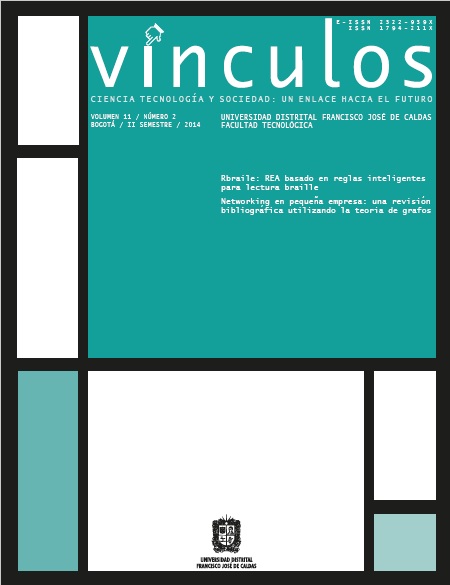
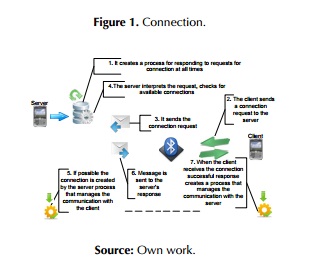
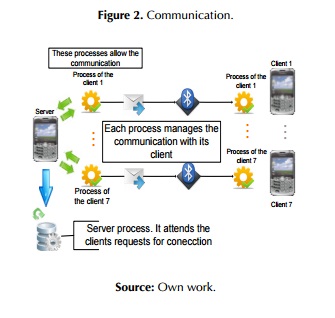
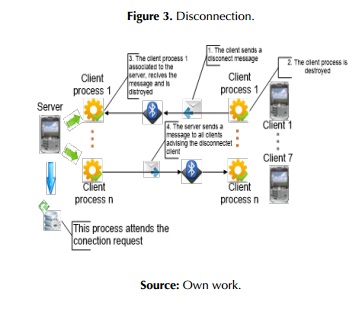
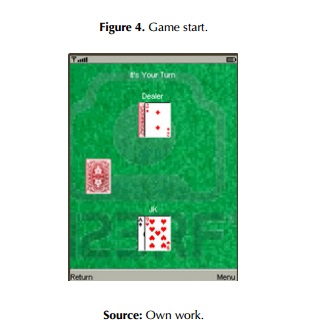
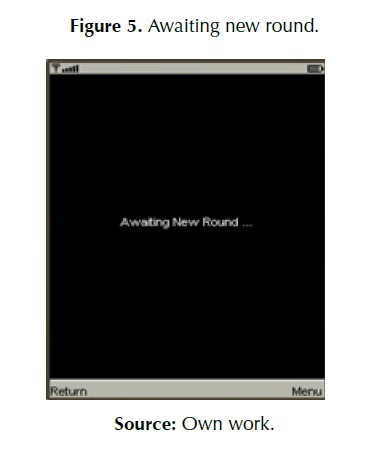
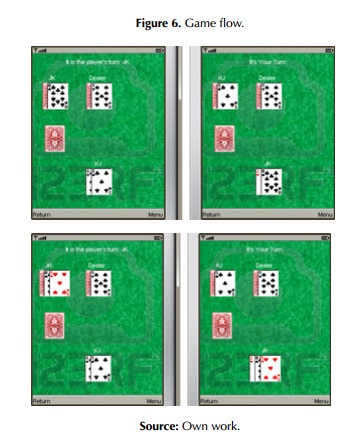
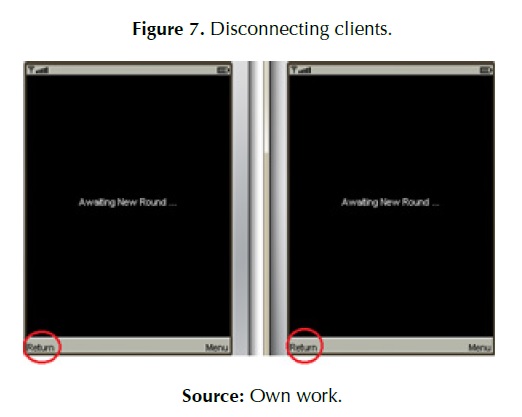
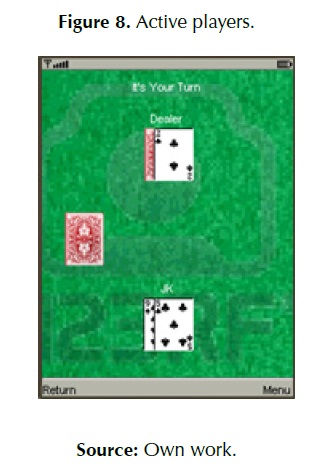
4.png)



